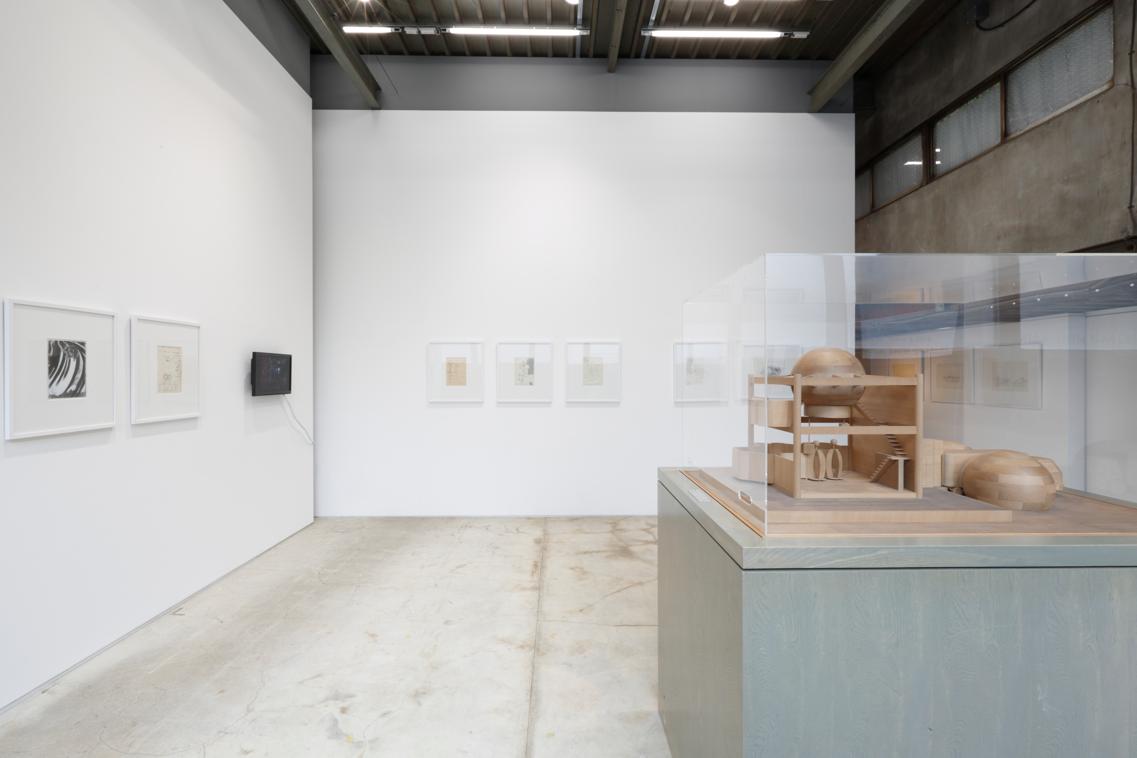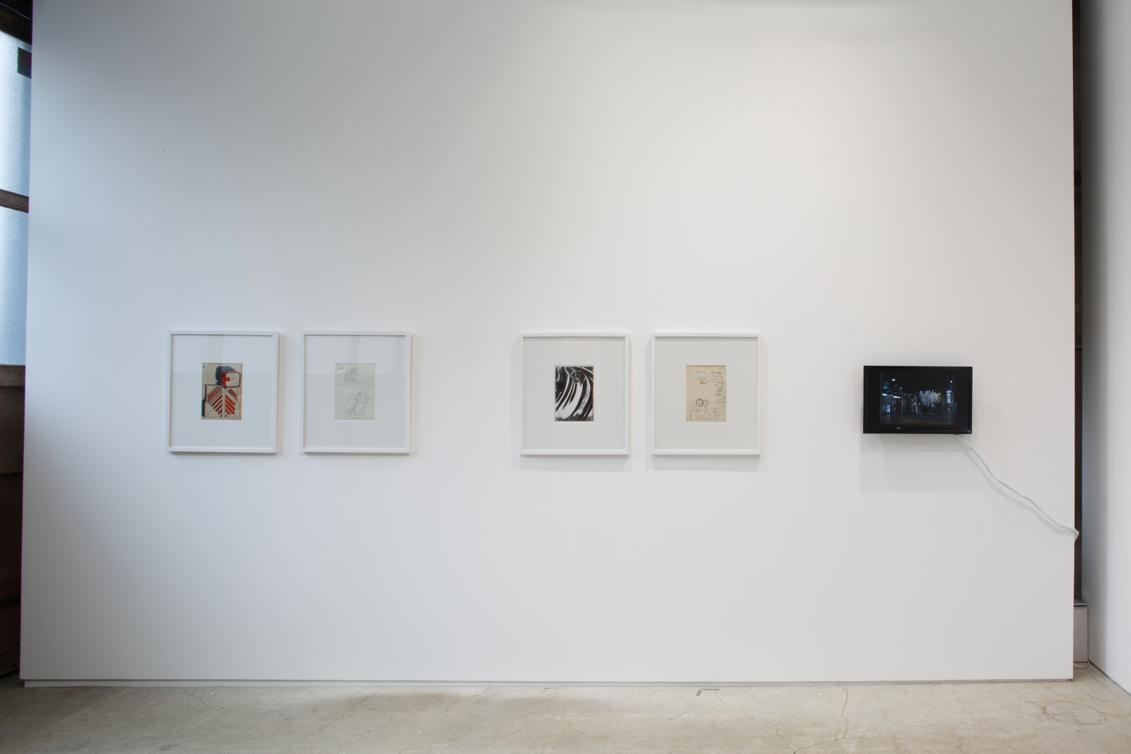
ISOZAKI Arata Labyrinth in Motion 2014
Installation view at MISA SHIN GALLERY
Photo: Keizo Kioku

ISOZAKI Arata Labyrinth in Motion 2014
Installation view at MISA SHIN GALLERY
Photo: Keizo Kioku
Isozaki Arata 磯崎新
Labyrinth in Motion
Date:Friday, January 24 – Saturday, March 8, 2014
PRESS RELEASE
Download Press release (English)
Download Press release (日本語)
<日本語は英語の後に続きます>
Isozaki Arata, globally recognized for his architectural work, is also a vocal critic and well known artist and cultural activist. From the early stages of his career, Isozaki has strived to develop architecture in the context of art, creating numerous groundbreaking and genre-shattering pieces. The approach Isozaki makes as an architect challenges the preconceived notion that architecture is stationary by nature. He has attempted to actively expand his role as architect by questioning how one might express the notion of movement in architecture or by taking into account the changing process of a city and its environment.
Japan, at the end of its Avant-garde movement in the late 1960s, was experiencing a paradigm shift in the areas of art, music, film and design. It facilitated a blurring of lines that defined the difference of one genre from the other. Many artists expressed themselves freely outside of their perceived “genre” during this inter-media era. In 1966, Isozaki designed the exhibition From Space to Environment, which consisted of numerous installations that forced upon the audience an interactive experience. These art pieces were created by artists from various genres, and were connected under the keyword “environment.”
Electric Labyrinth (1968), a cybernetic installation piece created for the Milano Triennale, consisted of 16 curved panels that would react to the audience’s movement by incorporating infrared sensors. This concept was later further developed into his work that was unveiled at Osaka Expo ’70 in 1970. In an era when Architecture and Art were undergoing a drastic paradigm shift, Electric Labyrinth was an opportunity for Isozaki to contemplate the possibilities of technology, designing mechanical contrivance in architectural space, and the formation of a city within an ever-changing environment.
A city is a vessel in which people convene, but is not a place to settle. Despite that notion, architecture in the city exists as a permanent object, and that has become the accepted architectural notion. A city is space that is formed by a series of events.
At Labyrinth in Motion, we will have on display, drawings and models that were presented at the following:
- Fukuoka Mutual Bank Oita Branch (1966) – presented at the Colors and Space and From Space to Environment exhibitions.
- A House (1969) A house in itself consists entirely of robot-like contraptions that respond in accordance to the resident’s movement.
- Obscured Horizon (2007) Bedrooms erected in the desert of California
- Ark Nova (2012) A ‘movable’ concert hall as a proposal to create a theatrical space within architecture.
Isozaki’s diverse array of work, ranging from his current work to those dating back to the 60s, all share in common the idea of architecture as anti-fixation, and are approached from a broadened concept of what architecture can be.
Isozaki Arata
Born in Oita, 1931. Graduated with a degree from the University of Tokyo School of Engineering Architecture Department. He created Arata Isozaki & Associates in 1963, and it exists to this day. Beginning with his work in the 1960’s such as the Oita Prefectural Library, when he was based mostly in Oita City, from the 1990’s onward he has expanded his activity around the world to include Barcelona, Holland, Krakov, Okayama, Kyoto, La Coruña, Yamaguchi, Berlin, and then in this century the Middle East, China and Central Asia. More than any other architect, his work reveals in its very construction a collision with politics, society and culture, and a deployment of personal thought and space that transcends ideological boundaries. Because he demonstrates the potential of those primal areas through his manner of construction, he has come to have a huge impact on other areas of knowledge as well. Through his critical writing, and as a judge at architecture competitions, he has also played an immense role in bringing to realization the concepts of radical architects around the world. His more than half a century of work includes philosophy, visual art, design, music, films, and plays, and he is always going beyond the framework of architecture to raise questions that transcend eras and borders.
磯崎新は、その建築のみならず活発な評論活動、芸術文化活動においても広く知られています。磯崎はキャリアのごく初期の段階からアートの文脈で建築を思考し、その概念を逸脱するような作品群を制作しています。それは、固定すべきものとした概念をもつ建築において、動くイメージの表現や、時間とともに変化する過程に、建築家として主体的に介入するにはどうすればいいかという問いから始まっています。
日本のアバンギャルド運動が収束に向かう1960年代後半は、美術、音楽、映像、デザインなどさまざまな芸術領域にパラダイム変換とも言うべきシフトが起こり、それらの領域が従来の枠組みを超えて活動したインターメディアな時代でもありました。1966年、磯崎が展示デザインを行った展覧会「空間から環境へ」は、さまざまなジャンルのアーティストが観客にインターラクティブな体験を強いる作品によって構成され、それは「環境(エンバイラメント)」として彼らの活動をつなぐキーワードとなりました。
ミラノ・トリエンナーレのために制作した「電気的迷宮」(1968年)は、16枚の湾曲したパネルが赤外線センサーによって観客の行動に反応して動くというサイバネティックスが組み込まれたインスタレーションで、その後の大阪万博お祭り広場(1970年)の構想に繋がっていくコンセプトが集約された作品でもありました。建築やアートをとりまくドラスティックな時代の変化の中で、磯崎にとって「電気的迷宮」は、テクノロジーの問題や装置空間のデザインについて、また変化する都市の生成についてなどを考える契機となりました。
本展では、「色彩と空間」「空間から環境へ」展に出品した「福岡相互銀行大分支店」 (1966年)、住み手の動きにロボットのように対応していく装置だけで構成されているレスポンシブ・ハウス「A邸」(1969年)、カルフォルニア州の砂漠に作られた「Obscured Horizon(砂漠の寝所)」(2007年)、また建築を演劇的なパフォーマンスの場に見立てる提案としての移動コンサートホール「アークノヴァ」(2012年)に関連したドローイングおよび模型などを展示します。
1960年代後半から進行中のプロジェクトまで、磯崎の一見多様な仕事の取り組みと見えるものは、固定しないものとしての建築、広義の建築という考え方と緊密に結びついています。
磯崎新
1931年大分市生まれ。1954年東京大学工学部建築学科卒業。1963年磯崎新アトリエを設立、現在に至る。大分県立中央図書館をはじめ、60年代に大分市に集中して実現された建築群から、90年代の国内外各地、バルセロナ、オーランド、クラコフ、岡山県奈義町、京都、奈良、ラ・コルーニャ、山口県秋吉台、ベルリンなど、そして今世紀に入り、中東、中国、中央アジアをはじめとする数多くの最新作まで、どの思想領域にも属さない個人的な思考と空間の展開でありながら、政治・社会・文化に他のどの建築家よりも深く觝触しつつ、それを建築において開示してきた。すなわち建築がその始源からもつ潜在力をとり出してみせることで、他領域の知に対しても大きな影響を与えてきた。また評論や設計競技の審査を通じて、世界のラディカルな建築家たちの発想を実現に導くうえでのはかり知れない支援を果たした。半世紀を越えるその活動は、思想、美術、デザイン、音楽、映画、演劇など常に建築の枠組みを超えて、時代や他領域を交錯する問題提起を生み出している。
